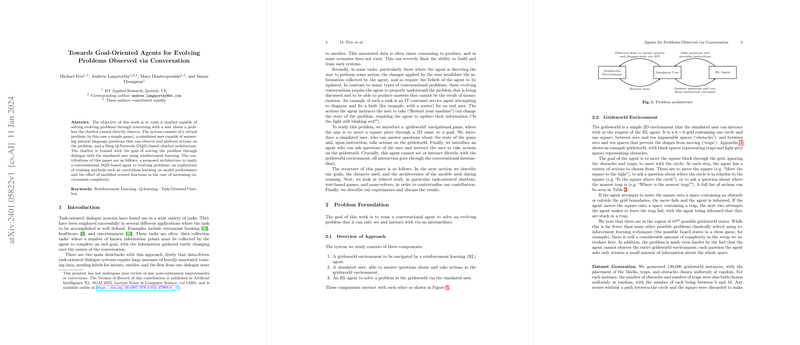Overview of the Paper
AI has been utilised in multiple applications, and among its many roles, it has significantly contributed to the development of task-oriented dialogue systems. Such systems have traditionally been limited to tasks with a clear set of instructions and often rely on substantial annotated datasets, which are both time-consuming and costly to produce. This paper presents an innovative framework to train a conversational agent – essentially a chatbot – that can solve evolving problems which it can only observe and interact with through conversation with an intermediary simulated user.
Architecture Design
At the core of this research lies an intricate architecture that combines several elements:
- A virtual navigational game, termed 'gridsworld', presents the evolving problem space the chatbot must conquer.
- A simulated user is designed to interact with the gridsworld environment, respond to the chatbot’s queries, and inform it of resulting state changes.
- The chatbot itself, which employs a Deep Q-Network (DQN) approach, is developed to solve the problem by obtaining information through the simulated user, without any direct observation or interaction with the gridsworld.
To facilitate this process, the chatbot and the simulated user engage in a dialogue, where the chatbot's ultimate objective is to maneuver a square piece to meet a circle within the gridsworld by asking questions and instructing the simulated user to take actions.
Training Strategies and Experimentation
The chatbot was educated using reinforcement learning, a technique involving trial and error coupled with rewards signaling successful decisions. The researchers applied curriculum learning to prioritize easier problems during the early training stages before gradually introducing more difficult challenges. This teaching method proved to reduce the overall training time significantly.
Experimentation included several variants of the chatbot architecture, each employing different neural network structures to process the conversational context. The research team also experimented with modifications to the reward function to ascertain if encouraging certain behaviors could accelerate or otherwise improve the training outcome.
Results and Implications
Results demonstrate the effectiveness of this AI system in managing tasks communicated through conversational exchanges with the simulated user, where it achieved a success rate that is quite promising. Despite that, the success rate was below that of human participants, partly because the algorithm focused on maximizing rewards as opposed to achieving success in every instance.
The implications of this paper extend beyond the experimental setup, suggesting potential applications in customer service environments where AI can provide instructions or diagnostics without direct observation. As this is an initial paper, the researchers acknowledge that further work is required to deal with a broader array of conversational responses and to fine-tune the reward mechanism in line with typical user experience considerations.
Moving forward, the researchers aim to enhance the simulated user's abilities and to expand the chatbot's conversational capabilities to better suit complex, real-world scenarios. Although the current model excels within a controlled gridsworld, future iterations will need to confront the full unpredictability of human dialogue and real-world problem-solving.
